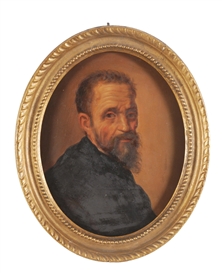CITY OF LIGHT AND LENSES
CITY OF LIGHT AND LENSES Paris Photo 2008 Carousel Du Louvre Paris November 13-16, 2008 Louis-Jacques-Mandé Daguerre, born in November 1787, would no
Luke Strosnider / Afterimage
Jan 01, 2009

Paris Photo 2008
Carousel Du Louvre
Paris
November 13-16, 2008
Louis-Jacques-Mand茅 Daguerre, born in November 1787, would no doubt be warmed to learn that his former city fills with imagemakers and image lovers during the eleventh month of every year. Photographs fill galleries and museums, with the colossal Paris Photo Fair serving as a centerpiece of this "mois de la photo." This year, the fair's twelfth installment, maintained its massive status: over one hundred exhibitors from nineteen countries converged beneath the Louvre to show, tell, and sell all manner of contemporary and vintage images.
This being an art sale in Europe's most glamorous city, the well dressed and well heeled were out in force. But most appeared to be there to look rather than be seen. That's not to say the scent of money was absent: Jacquart champagne and Issey Miyake perfume sponsored a VIP lounge, and a sparkling new BMW 730d dominated the main hall. In their defense, BMW did sponsor the Paris Photo 2008 Prize (won by Yao Lu), but the photos displayed with the car (commissioned to promote BMW and separate from the prize contenders) were silly duds. Fashion shooter Fr茅d茅ric Pinet's contribution to the ad campaign was a lithe runway model sprinting through the desert, trying to escape a pursuing BMW. It is difficult not to think of John Divola chasing those desert dogs and how much less they would have charged to do the shoot.
Continued, vigorous interest in photography books was evidenced by a special section devoted to Japanese art book publishers, giving fairgoers a taste of that nation's continuing traditions of image excellence. On hand were Seigensha Art Publishing, Tosei-Sha, Akaaka Art Publishing, and others, all doing a brisk business in gorgeous tomes. Beyond just commerce, some education seeped in via a wall-sized "History of Japanese Photography" timeline. Placing key moments in Japanese photographic practice and publishing within the global artistic and cultural landscape, this well-designed chart documented Japan's many robust contributions to the medium.
Befitting their status as citizens of this year's "Guest of Honor," over a dozen Japanese galleries and dealers were displaying the work of their countrymen and women. Among the deluge of flat images, the pop-up people of Akiko Ikeda's photographs felt fresh. Purists may scoff at what they perceive as a gimmick, but what's wrong with a little fun? The crowds around her grid of forty-eight snapshots at the Third Gallery Aya booth were dense with smiling admirers; an effective antidote to anyone who would take photography too seriously.
Several selections from Tomoko Yoneda's "Between Visible and Invisible" series (1998-2008) dominated the Shugo Arts gallery booth. These images of texts as photographed through the eyeglasses of great minds - for example, Brecht's Glasses- Viewing a Dedication by Walter Benjamin (2008) - generate an echo of emotional "being there" as both observer and participant for these deeply personal and historical moments.
Despite the heavy presence of well-established galleries and the big names they represent, overflowing fairs like Paris Photo provide ample chance to judge emerging talent. Pieces from Maria Antonietta Mameli's "Human Observation-Red Bags" series (2007) captivated many eyes (and many wallets, as evidenced by the numerous "sold" stickers beside each piece). The images debuted at Bruce Silverstein earlier this year and depict shoppers in New York's Chinatown, captured from the vantage of the Manhattan Bridge. Later, Mameli removes everything but a solitary figure and their shadow, leaving them to tote their red plastic bags in an expansive void. Elsewhere, while the corporate-sponsored "SFR Jeunes Talents" room was full of visitors, the work found there was less than sparkling. Steven Planchard's night photos were moody and dark - as night photos are wont to be - and led the ho-hum pack. However, SFR should be complimented for recognizing that fully realized artwork takes time to evolve - the ages of their "young" talents ranged from 27 to 49 - instead of lauding the work of teenagers just out of school.
The moving image was not forgotten at this festival of (mostly) prints on paper. In addition to videos by Japanese photographers on view in the fair's "Project Room," the occasional flat-panel screen took up precious wall space at a few booths. Cristina Lucas's Habla (2008) - a documentation of her scaling and smashing Michelangelo's Moses with a sledgehammer (don't worry, it's a replica) - had viewers at the Juana de Aizpuru gallery booth mesmerized. So too did Jefferey Blondes's La Tailles des Antes (2007), a twenty-four-hour, high-definition video loop of a placid forest scene. Barely anything noticeable happened in the short chunk I was able to view, but that's surely the point: looking must remain a patient, intense activity.
Fairs like Paris Photo are often seen as barometers of the health and strength of the medium and the market. Although the specter of an economic slowdown spreads throughout Europe and the rest of the world, this fair showed that there is still a little money changing hands. But let the buyers and brokers count the cash; beautiful ideas expressed as images characterized this meeting of photography's greatest practitioners and advocates.
AUTHOR AFFILIATION
LUKE STROSNIDER is a recent graduate of Visual Studies Workshop in Rochester, New York To see more of his words, images, and projects visit www.lensless.net.
COPYRIGHT: Copyright Visual Studies Workshop, Inc. Jan/Feb 2009. Provided by Proquest- CSA, LLC. All Rights Reserved. Only fair use as provided by the United States copyright law is permitted.
PROQUEST-CSA, LLC- MAKES NO WARRANTY REGARDING THE ACCURACY, COMPLETENESS, OR TIMELINESS OF THE LICENSED MATERIALS OR ANY WARRANTY, EXPRESS OR IMPLIED.











